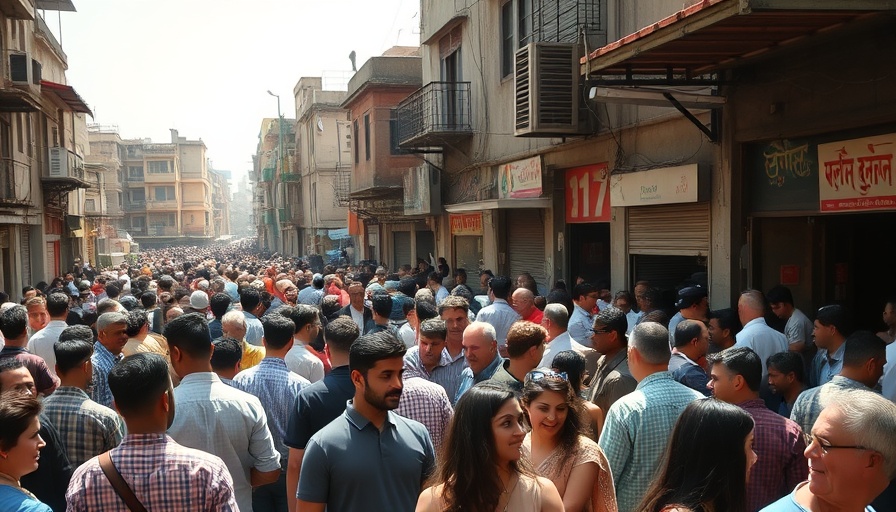
The Crisis of Humanitarian Aid in Gaza
The ongoing humanitarian crisis in Gaza has taken a dark turn as the U.S.-backed Gaza Humanitarian Foundation (GHF) announces it will halt its aid distribution on Wednesday. This decision arrives on the heels of a tragic incident where at least 27 Palestinians lost their lives while seeking crucial aid near GHF food distribution sites. This situation highlights the pressing need for safety protocols not only for the organizations delivering aid but for those in dire need of assistance.
The Fate of Civilians: Risks and Regulations
As tensions escalate, the Israeli military has issued warnings, designating areas surrounding GHF distribution sites as "combat zones." This implies that any movement towards these areas may put civilians at risk, effectively complicating the already challenging environment of delivering humanitarian assistance. The GHF's call for the Israeli military to improve safety measures—like guiding civilian foot traffic to minimize confusion—signals a desperate attempt to safeguard lives while still providing necessary resources.
UN's Vote on Ceasefire: Hope or Hurdle?
In conjunction with the GHF's suspension of aid, the United Nations is poised to hold a significant vote on a ceasefire demand, a step many hope will alleviate some of the tensions in the region. The UN’s involvement in the Gaza crisis raises questions about the effectiveness of international diplomacy in resolving humanitarian crises. Will a UN resolution provide more substantial safety nets for civilians, or is it merely a symbolic gesture?
Future Predictions: Amidst Despair, What Lies Ahead?
The humanitarian landscape in Gaza is complicated by both logistical challenges and political disputes. If the UN vote leads to positive outcomes, there is a potential for resuming aid more comprehensively. However, without tangible changes on the ground, the cycle of aid disruption and civilian danger may continue indefinitely. Experts in international relations predict that only sustained global pressure can push for effective resolutions in such crises.
Building a Safer Framework for Aid Distribution
The halt in aid distribution indicates critical failures in safety protocols that must be urgently addressed. It begs the question: what actionable changes can ensure the security of both aid workers and civilians? Developing clear and structured pathways for both the delivery of aid and the movement of individuals in conflict zones could transform the current state of emergency into a more manageable situation. Humanitarian agencies will need to innovate around the challenges posed by ongoing conflicts, employing technology, including GIS mapping, to create safer pathways.
Awareness and Action: The Role of Global Citizens
This complex issue calls for not only governmental action but public awareness and pressure as well. Citizens around the world can play an integral part in advocating for humanitarian aid policies towards Gaza, pushing their representatives to take a clear stand on global humanitarian crises. Increasing awareness can lead to greater support for organizations working on the ground to protect civilians and deliver aid effectively.
The recent events in Gaza raise urgent questions about humanitarian efforts in war-torn regions. As we reflect on these issues, it's imperative we remain engaged and informed, advocating for the structural changes needed to provide aid safely and effectively moving forward. The path to ensuring safety for civilians and aid workers alike is complex but crucial for the future of humanitarian efforts in crisis zones.
If you are complicit in advocating for awareness, ways to make a tangible difference are abundant—participate in discussions, support relevant NGOs, and learn more about the conditions in conflict-ridden areas, ensuring the safety and dignity of the civilians caught in these crises.
 Add Row
Add Row  Add
Add 



Write A Comment